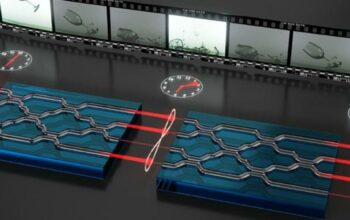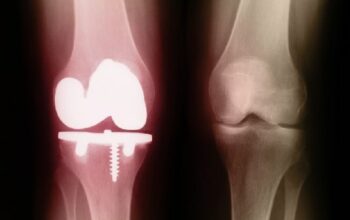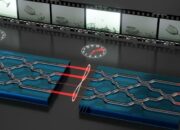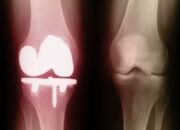The realm of material science and engineering has long been dominated by the desire for perfection, where the notion of flawless materials and pristine components is heralded as the pinnacle of technological advancement. However, an intriguing paradigm has surfaced: the embrace of imperfections—specifically, defects. This article delves into the emerging notion that rather than being mere anomalies to be rectified, defects can synergistically contribute to enhanced performance and functionality in modern devices.
The understanding of defects spans multiple disciplines, including solid state physics, materials science, and engineering. Defects can manifest in various forms, such as vacancies, dislocations, and interstitial atoms, each exhibiting unique properties that can influence overall material behavior. While historically viewed as detrimental, recent research suggests that these so-called “flaws” can alter the structural and electronic properties of materials in beneficial ways.
One cannot overlook the inherent appeal of perfection. In the world of consumer electronics and advanced materials, smooth finishes and unblemished surfaces are often equated with superior quality. However, emerging methodologies advocate for a shift from the conventional emphasis on homogeneity to an appreciation of heterogeneity. By understanding how imperfections can be utilized, engineers are beginning to design devices that are not only more efficient but also more resilient.
The phenomenon of defect engineering has gained traction, particularly in the context of semiconductors. Semiconductor devices are the backbone of modern electronics, and the properties of semiconductor materials can be radically modified through intentional defect creation. For instance, the introduction of controlled impurities can drastically improve the conductive properties of silicon, the material paramount to millions of electronic devices. This practice, commonly referred to as doping, illustrates how imperfections in atomic structure can lead to enhanced performance metrics, such as increased charge carrier mobility and reduced energy loss.
A profound example of this concept is observed in the recent developments in graphene technology. Graphene, a single layer of carbon atoms arranged in a two-dimensional lattice, is heralded for its remarkable electrical and thermal conductivity. However, studies have indicated that introducing defects within this lattice can lead to improved interaction capabilities with other materials, facilitating advancements in electronic devices, sensors, and energy storage systems. Such innovations underscore the notion that strategic imperfection can pivot technological capabilities in unforeseen directions.
Moreover, the relationship between defects and mechanical properties offers another layer of complexity. The quest for lighter, stronger materials has led engineers to explore how defects can impact tensile strength and ductility. Research into metallic alloys reveals that a deliberate introduction of dislocations can yield materials that withstand structural stresses much better than their perfect counterparts. This phenomenon, often referred to as “work hardening,” demonstrates that controlling defects can create a material that possesses an optimum balance of strength and flexibility necessary for demanding applications in aerospace and automotive industries.
The implications of embracing imperfections extend beyond the realm of individual materials. The integration of defect-laden materials into complex systems is fostering the development of devices that exhibit a higher degree of functionality and adaptability. For example, smart materials—those that can undergo a change in their properties in response to environmental stimuli—are often engineered with specific defects that allow them to react more efficiently to external conditions. This adaptability can be critical in applications ranging from self-healing materials to flexible electronic devices.
The intersection of defects and artificial intelligence (AI) presents an even more fascinating frontier. Machine learning algorithms are being utilized to analyze vast datasets on material properties and defects, enabling researchers to predict the performance outcomes of various defect configurations. This predictive capability not only accelerates the design process of new materials but also allows for a higher degree of customization tailored for specific applications. The culmination of AI and defect engineering optimizes the development of next-generation devices, where imperfections are not merely tolerated, but celebrated as integral components of innovative functionality.
Such a transformative perspective encourages an ongoing dialogue within the scientific community about the role of defects in the broader landscape of material design. Interdisciplinary collaboration between physicists, materials scientists, and engineers is essential for further exploring the intricacies of defect utilization. Researchers must continue to investigate the relationships between defects, material properties, and device performance to pioneer the next wave of technological advancements.
In conclusion, the embrace of imperfections heralds a significant conceptual shift in materials science and device engineering. Defects, once viewed as mere hindrances, are emerging as pivotal elements that enhance the functionality and performance of modern technologies. This evolving understanding encourages a broader re-examination of the very principles underpinning material design. By recognizing the potential of defects, researchers can unlock new possibilities, fostering the development of devices that not only meet but exceed the demands of the future. As this paradigm gains traction, one can only speculate on the innovative advancements that lie ahead, encouraging a renewed curiosity towards the seemingly imperfect world of materials.












